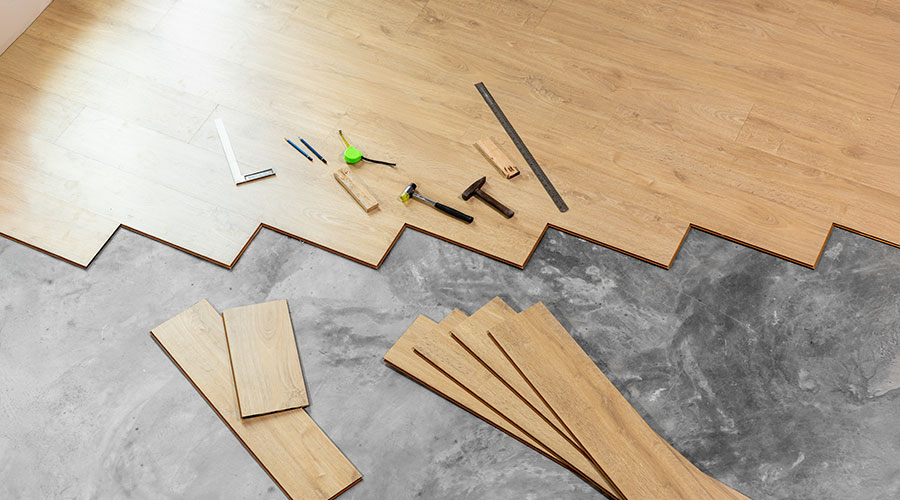Address Substrate Issues To Avoid Flooring Adhesive Problems
When it comes to flooring installations, one of the common factors in flooring adhesive problems is the substrate.
The two biggest problems with concrete substrates are alkalinity and moisture. Concrete is naturally alkaline. Moisture in concrete allows the alkalinity to be active on the surface, which will cause most adhesives to fail.
Some people say that their adhesive will work in these situations. Read the fine print: It usually negates some of the "it works" part of the so-called warranty. There are also topical treatments or concrete additives that will bind up the moisture and alkalinity, but most of them won't allow adhesive to stick.
Some installation systems and treatments are as good as they are said to be. None uses adhesive from a bucket, which is going the way of the horse and buggy.
There are concrete treatments that do allow for the installation of flooring material over concrete that has moisture, alkalinity and highly burnished surface. At least one manufacturer produces a double-sided tape using a polyacrylic adhesive system intended for all hard surface flooring and hard-backed carpet tile and that, if used correctly, works over suspect substrates. There are fleece-like recycled content carpet tile backings that can be installed with Velcro hook squares that take the substrate out of play completely, no matter what the issue. And there is installation technology that bonds to the substrate with no use of adhesive.
All of these systems, and more, are now in service and working with hundreds of thousands if not millions of square feet of flooring successfully installed for years. The systems that work can also be used on wood products, and some are suited for use over raised access flooring. That said, some systems don't work as well as advertised. With any system, even the ones you know have worked, it is always important to do a test. And anything can fail if the right compromiser is introduced.
Flooring Materials
Changes to flooring materials have complicated installation. With increased commercial use of flooring products typically not in high demand in the past — such as wood, cork, bamboo, linoleum, luxury vinyl tile, laminate and carpet tiles with recycled content backing, as well as some broadloom carpet with recycled content backings, cushion and hybrid backings — a knowledge gap has emerged as to how to install these products, what adhesives will work best with them, and the idiosyncrasies of the backing and product in installation environments.
The greening of products has also caused some complications. Many carpet products use recycled content in fiber and backings. The carpet industry has been one of the first and most continually active in making products with recycled content and products that can be recycled. This has not come without challenges, particularly with carpet tile. For example, if carpet tile curls up on the edges, the problem may be caused by inherent dimensional instability in the backing as a result of introducing recycled content. This problem is industrywide and cyclical — that is, it may go away for a while only to return again.
When flooring fails, an entire business operation can be shut down. To prevent problems, you have to be aware of the conditions of the installation site, both environmentally and of the substrate. You must also select the appropriate product and, just as important, engage the services of a flooring contractor capable of handling the installation. Of course, you should qualify them to ensure this happens and get expert help if you need it.
Experience with flooring and installation failures shows that problems can be avoided if you make yourself aware of what should be done. Think of this: After toothpaste is out of the tube, it's hard to get much of it back in and it gets real messy. Be proactive, not reactive.
Lewis Migliore is president of LGM and Associates, which offers technical flooring services. Contact him at lgmtcs@optilink.us.
Related Topics:











